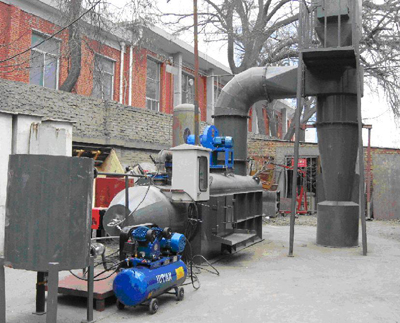After the development of the equipment for the harmless treatment of chemical liquid waste, the device of harmless treatment of solid chemical waste discharged from chemical laboratories was successfully developed by the National Engineering Research Center of Fine Petrochemical Intermediates (NERC), Lanzhou Institute of Chemical Physics (LICP), CAS.
Using the heat generated during the combustion of liquid waste, the device first predecomposes the solid waste into gas and ash. Then the gas is fed into another reactor to be fully oxidized into harmless carbon dioxide and water. The remained solid waste is heated further to be converted into inorganic ash in significantly less quantity. Thus, the solid waste is transformed into harmless gas products and residues. Finally the ash is oxidized at high temperature and turned into harmless inorganic oxides.
The solid chemical waste discharged from chemical laboratories is highly toxic pollutants with complicated components and hard to be processed. It can not be buried since the landfill of such waste will greatly pollute the environment.
The new technology developed by NERC in LICP process solid waste with the heat energy generated during the combustion of liquid waste. It is another breakthrough in energy conservation and emission reduction technologies and also in the research on the recycling use of waste. The technology consists of two stages, namely the first stage of combustion/gasification and the second stage of catalytic oxidation reaction. The device can operate automatically in both stages and easy to use and maintain.
The gasification/catalytic oxidation technology transforms the solid waste discharged from chemical laboratories into CO2, water and corresponding inorganic substances. Thus the harmless treatment of solid chemical waste using liquid waste is realized. The device can also process a small number of highly viscous and corrosive precipitates, or biological samples endangering public security.
The device can process about 50kg solid waste per hour with the power consumption of no more than 8kw/h. It can meet the needs of solid waste treatment of a medium-sized research institute if operating 7 hours per day. It is of great significance to commercialize this device in research institutes and institutions of higher education.

Picture of the device


